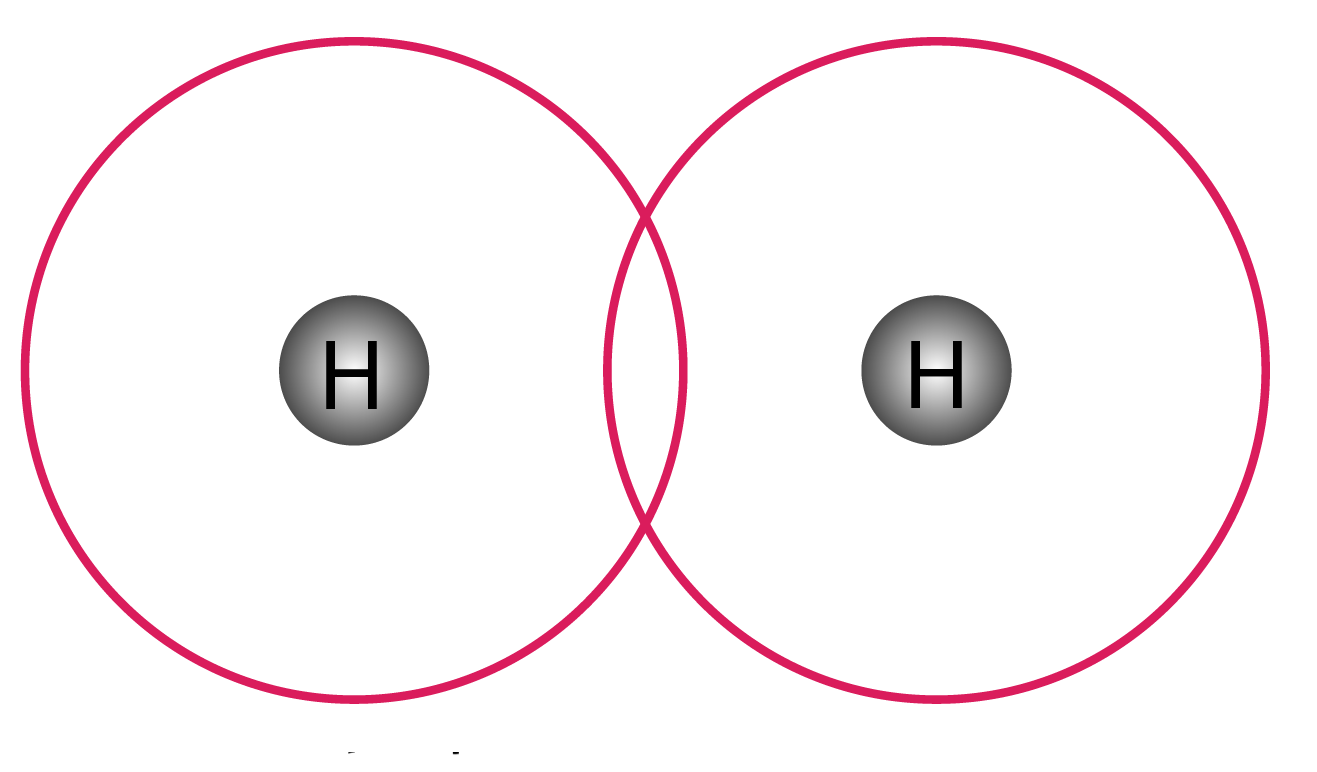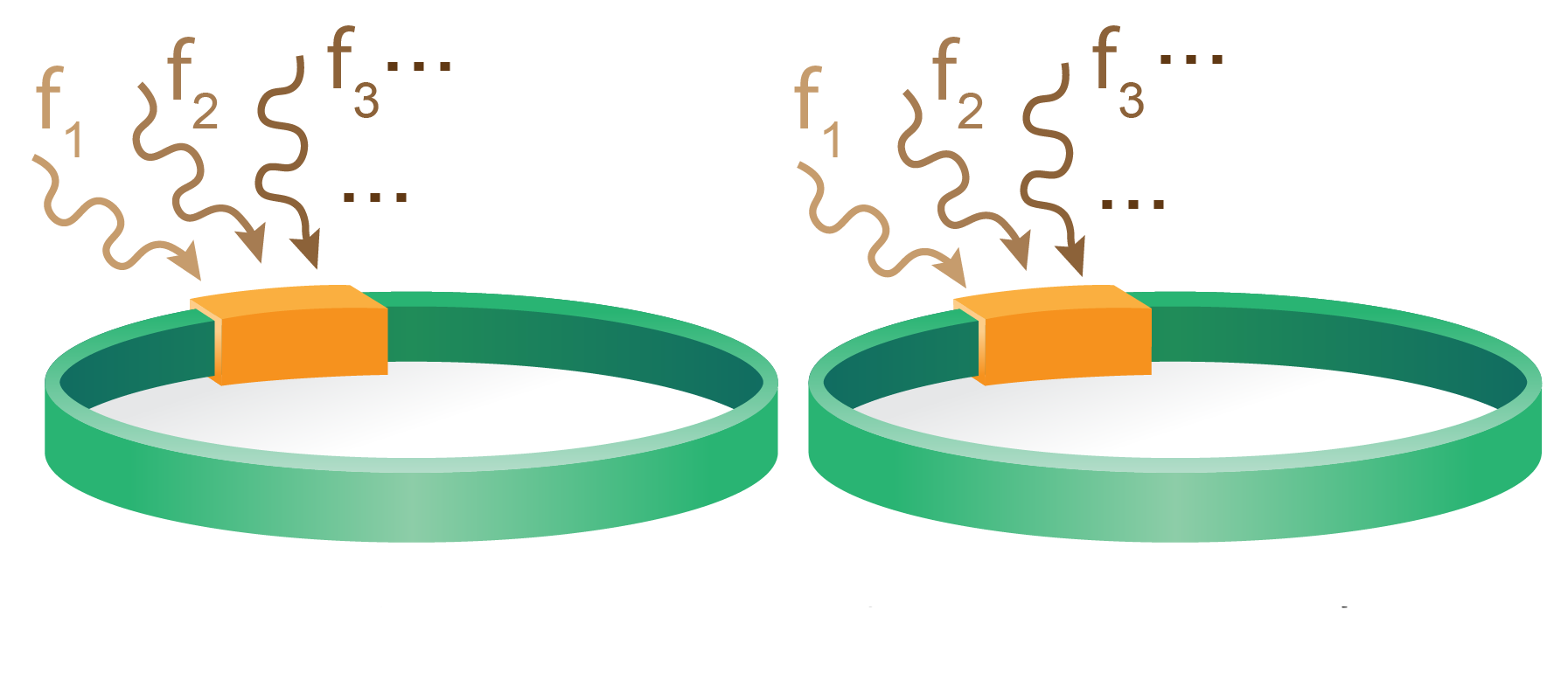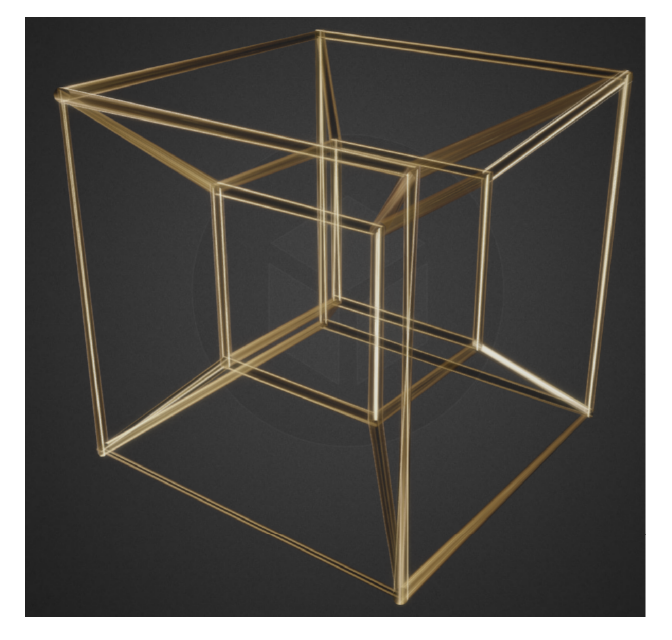
|
 |
A hydrogen molecule formed from two hydrogen atoms. |
|
Line, square, cube: the world we’re familiar with operates in three dimensions. But photonics experts can generate additional dimensions and even harness them for technological ends, allowing components to exhibit properties that would not otherwise be achievable.
"Synthetic dimensions," in which quantum properties are exploited in order to provide photons with degrees of freedom beyond the normal three spatial dimensions, have been the object of a growing body of research. Until recently, however, it was believed that such experiments on nanoscale photonic platforms required extremely high modulation frequencies, ranging from greater than 20 GHz to a terahertz, that are difficult and costly to achieve.

A photonic molecule formed from two rings.
New work by UMD assistant professor Avik Dutt (Mechanical Engineering/Institute for Physical Science and Technology) and researchers at his FearLess Optics, Quantum Engineering and Technology Lab, proposes a way to work with multidimensionality using more modest speeds and simpler equipment. Dutt, who joined the UMD faculty in 2022, is the recipient of a National Science Foundation (NSF) CAREER Award, announced in July 2024.
In a paper published in Nature Physics, he and his research team demonstrate that a potentially infinite number of synthetic dimensions can be created by manipulating the energies of a photonic molecule. Just as a hydrogen molecule (H2) is formed by coupling two hydrogen atoms, a photonic molecule is formed by coupling two optical ring resonators—the two “atoms”. Each ring resonator, in turn, is made up of a transparent material such as a silica optical fiber or a silicon wire looped back on itself. By doing so, the team found that energy could be converted readily to different driving frequencies.

A high-dimensional cube, formed by driving the photonic molecule with many frequencies or colors.
Moreover, adding drives at new frequencies has a highly interesting effect: it opens up new synthetic dimensions. As Dutt explains, “you just add in one more frequency at which you are sloshing the molecule back and forth, and you get another dimension.You add a second frequency, and you get a second dimension; a third frequency yields a third dimension, and so on.”
A surprise for the team—and a key focus of the Nature Physics paper—was that the effect does not seem to be affected much by loss or dissipation. As a result, researchers can eschew logistically difficult modulation speeds to utilize "integrated photonic chips and commercially available fiber optics—the same technology you would use for building an internet connection or a network," said the paper’s lead author, UMD doctoral student Sashank Kaushik Sridhar.
Noted Dutt: "We’re overcoming some of the challenges that have made it hard to morph these extra synthetic dimensions into very compact, small sized chips or systems."
"Until now it’s been a mathematical game of people theorizing about what could happen beyond three dimensions," Dutt said. “Now it’s not just a mathematical game. Using new concepts you can actually realize these dimensions in a physical hardware system and try to see experimentally the effects that people only thought of in theory."
In addition to Dutt and Sridhar, the paper’s authors include Sayan Ghosh, Dhruv Srinivasan, and Alexander R. Miller. Their work is supported by a Northrop Grumman seed grant, a National Quantum Laboratory joint seed grant from IonQ and the University of Maryland, and a National Science Foundation grant on Quantum Sensing Challenges for Transformational Advances in Quantum Systems.
The newly-published paper can be accessed here.
Related Articles:
Dutt Receives NSF CAREER Award
New Initiatives Push Toward Safe & Reliable Autonomous Systems
Tuna-Inspired Mechanical Fin Could Boost Underwater Drone Power
State-of-the-Art 3D Nanoprinter Now at UMD
Das Named Pioneering Researcher by Chemical Communications
Groth Part of $10 Million DOE Hydrogen Grant
UMD’s Zhao to Lead New Dynamic PRA Study
McGregor: Harnessing the Potential of Additive Manufacturing
MARC Program Now Accepting Applications
In Soft Robotics, Instability Can Be a Plus
February 27, 2024
|

